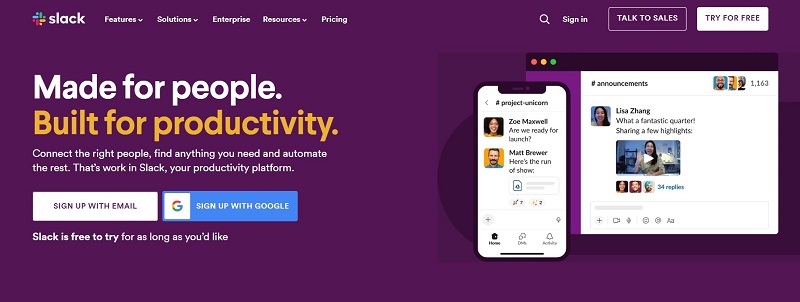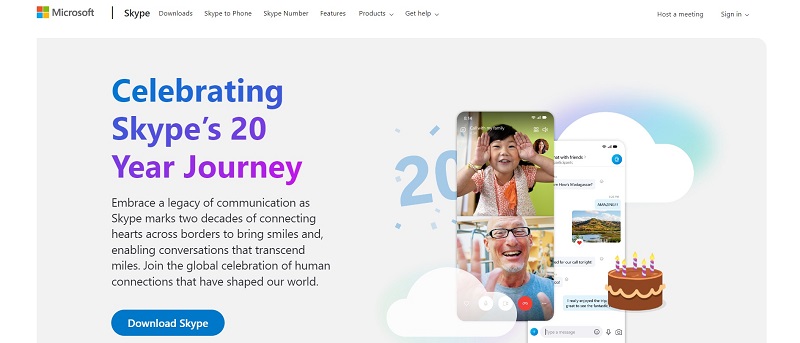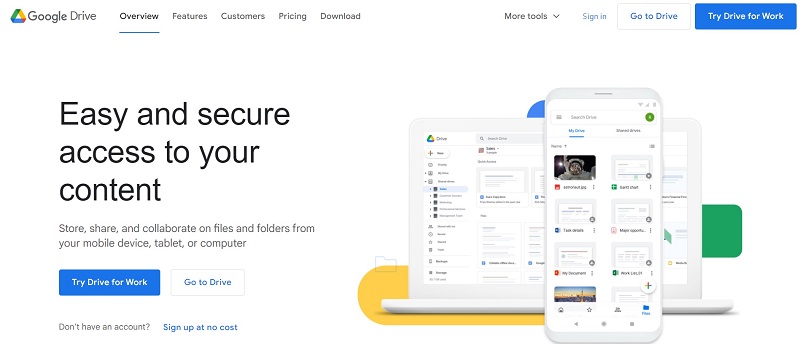Cloud collaboration has revolutionized the way teams work together, enabling seamless cooperation from any location. By leveraging cloud-based tools, employees can enhance productivity, communication, and flexibility. However, this approach also presents unique challenges. In this article, we will explore the benefits, challenges, and essential tools that make cloud collaboration a vital component of modern work environments.
What is Cloud Collaboration?
When we work together online instead of being in the same place or room is called cloud collaboration. People can now easily share, edit, and save documents in real-time through the Internet. This is mainly a central hub to keep all work where anyone on the team can access it from multiple devices. With this software, you can change things in real-time and people will instantly get the changes.
Also, you can talk to your team without using other apps since this type of software comes with tools for video calls, chatting, and comments. Moreover, teams can be more efficient with cloud collaboration services and don’t have to worry about multiple versions of files. In summary, this collaboration can grow with your team and is flexible. This is a useful tool for all types of businesses.
Top 5 Features of Cloud Collaboration
Cloud collaboration tools have transformed how teams work together, providing numerous features that enhance productivity and efficiency. Here are the top five features of cloud collaboration:
1. Real-Time Editing: Cloud collaboration tools allow multiple users to edit documents, spreadsheets, and presentations simultaneously. This feature ensures that everyone is working on the most current version of a document, reducing the need for back-and-forth emails and enabling faster decision-making and project completion.
2. File Sharing and Storage: These tools provide secure and centralized storage for documents, making it easy to share files with team members and external collaborators. Centralized storage ensures that all team members have access to the necessary documents at any time and from any device, improving workflow and reducing downtime.
3. Communication Tools: Integrated chat, video conferencing, and voice call functionalities enable seamless communication among team members. These tools facilitate instant discussions, quick problem-solving, and efficient collaboration, reducing the need for multiple communication platforms and enhancing team cohesion.
4. Task Management: Cloud collaboration platforms often include task management features that allow users to create, assign, and track tasks and projects. This helps keep projects organized, ensures accountability, and enables teams to stay on top of deadlines and deliverables, improving overall project management and productivity.
5. Version Control: Version control features to track changes made to documents and allows users to revert to previous versions if necessary. This ensures that the most accurate and up-to-date information is always available, prevents data loss, and reduces confusion over document revisions, making it easier to manage and review changes.
These features collectively enhance the ability of teams to collaborate effectively, regardless of their geographical location, leading to higher productivity, better project outcomes, and a more connected and efficient work environment.
Why is Cloud Collaboration Important?
The rise of remote work has significantly boosted the importance of cloud collaboration. Remote workers must access documents and communicate with teammates from various locations and at different times. Cloud collaboration provides the flexibility for geographically distributed teams to work together in real time, facilitating seamless communication and efficient workflows.
Cloud collaboration also enhances the tracking, storage, and version control of documents. All changes made to a document or file are recorded, stored, and made accessible via the cloud. This allows for a thorough review and revisitation of project elements, centralizing the efforts of remote and hybrid teams in one location, and making collaboration more streamlined and efficient.
A significant number of employees now have the option to work remotely full-time, underscoring the growing need for cloud collaboration solutions. These tools support a collaborative work environment by providing robust features that ensure smooth and efficient teamwork across distances.
Moreover, cloud collaboration centralizes access control. These tools enable companies to efficiently manage which team members have access to specific content, ensuring that sensitive information is secure and accessible only to authorized personnel. This structured approach to access control promotes a secure and organized collaborative environment, facilitating effective team collaboration.
Benefits of Cloud Collaboration
Cloud collaboration offers numerous advantages that enhance the way teams work together, making it an indispensable tool in modern workplaces. Here are four key benefits:
1. Enhanced Accessibility
Cloud collaboration tools allow team members to access documents and work on projects from any location with internet access. This flexibility supports remote work and enables teams to collaborate seamlessly regardless of geographical barriers. Employees can stay productive and connected whether they are in the office, at home, or on the go.
2. Real-Time Collaboration
One of the most significant benefits of cloud collaboration is the ability to work on documents and projects in real time. Multiple users can simultaneously edit, comment, and update files, reducing delays and ensuring that everyone is working with the most current information. This real-time interaction fosters quicker decision-making and more efficient workflows.
3. Improved Document Management and Version Control
Cloud collaboration enhances the management of documents by centralizing storage and maintaining version control. All changes to a document are recorded and stored, allowing team members to track revisions and revert to previous versions if necessary. This feature ensures that the most accurate and up-to-date information is always available, reducing confusion and preventing data loss.
4. Centralized Access Control and Security
With cloud collaboration tools, companies can efficiently manage access control by determining which team members can access specific content. This centralized approach to security ensures that sensitive information is only accessible to authorized personnel. Advanced security features, such as encryption and multi-factor authentication, further protect data, making cloud collaboration a secure option for businesses.
These benefits collectively enhance team productivity, streamline workflows, and ensure that collaboration is both efficient and secure.
Challenges of Cloud Collaboration
While cloud collaboration offers numerous benefits, implementing it can come with its own set of challenges. Here are three main challenges businesses might face:
1. Data Security and Privacy Concerns
One of the primary challenges in implementing cloud collaboration is ensuring the security and privacy of data. Storing sensitive information in the cloud can make it vulnerable to cyberattacks and unauthorized access. Companies must invest in robust security measures, such as encryption, multi-factor authentication, and regular security audits, to protect their data. Additionally, complying with various data protection regulations, such as GDPR or CCPA, can add complexity to managing cloud-based systems.
2. Integration with Existing Systems
Integrating cloud collaboration tools with existing IT infrastructure and systems can be a complex process. Many organizations use a mix of legacy systems and modern applications, which might not seamlessly work together with new cloud solutions. Ensuring compatibility and smooth data flow between different platforms requires careful planning and possibly significant adjustments or upgrades to existing systems. This integration process can be time-consuming and costly, potentially disrupting normal business operations during the transition period.
3. Change Management and User Adoption
Adopting new cloud collaboration tools requires a change in the way employees work, which can be met with resistance. Ensuring that all team members are comfortable with and proficient in using new tools can be challenging. Effective change management strategies are essential to address this issue, including comprehensive training programs, ongoing support, and clear communication about the benefits and uses of the new tools. Overcoming resistance to change and encouraging user adoption is crucial for the successful implementation of cloud collaboration solutions.
3 Best Cloud Collaboration Tools
Cloud-based collaboration software helps you to grow your business and collaborate with others. In this section, we will introduce the 5 best cloud collaboration tools.
1. Slack

Slack is one of the most famous cloud collaboration tools for chatting and working together. This cloud based collaboration tool offers different unique features for you. Teams can stay organized and get work done with their separate channels for various projects, custom emojis, and pins. Furthermore, it lets you send direct messages that work with other applications such as Asana or monday.com. Lastly, Slack has a simple and easy-to-use interface so everyone can use this tool.
2. Skype

Skype is another famous cloud collaboration software that helps you work together online. People love this tool since they can have free meetings using it. Also, they can collaborate on PowerPoint and share screens with others. Skype can be used for free and purchased for more features. You can have a meeting with up to 9 people in the free version. However, you will get extra features such as recording meetings, instant messaging, and having group meetings with up to 250 people in the paid version. Additionally, Skype is known for video conferencing and teleconferencing.
3. Google Drive

Google Drive is a well-known cloud collaboration tool for working together with others and storing files online. The best thing about Google Drive is you can share a link with people so they can see what you’re working on. Also, it lets you control who can download or comment on parts of your document. You can give them roles such as commenter, viewer, or editor. In addition, Google Drive lets you share and work together on documents easily. Drive Documents is another neat feature that allows you to attach files to emails using just a link.
Using ZEGOCLOUD for Cloud Collaboration
ZEGOCLOUD offers robust real-time communication solutions that can significantly enhance cloud collaboration within your organization. By integrating ZEGOCLOUD’s tools, businesses can improve productivity, streamline communication, and foster a more cohesive and efficient work environment.

Here’s how ZEGOCLOUD can be used for cloud collaboration:
Key Features:
- Real-Time Communication: ZEGOCLOUD provides high-quality video and audio communication capabilities, enabling clear and seamless virtual meetings. This allows team members to communicate in real time, regardless of their physical location, ensuring that everyone stays connected and engaged.
- Instant Messaging and File Sharing: ZEGOCLOUD’s platform includes instant messaging and file-sharing features, allowing for quick exchange of ideas, documents, and feedback. These features reduce the time spent on emails and enable more dynamic and immediate collaboration.
- Cross-Platform Support: ZEGOCLOUD supports multiple platforms, including iOS, Android, Web, React Native, and Flutter. This ensures that team members can stay connected and collaborate using any device, be it a smartphone, tablet, or desktop.
- Interactive Features: ZEGOCLOUD offers a variety of interactive features such as screen sharing, whiteboard collaboration, and live polls. These tools make virtual meetings and collaborative sessions more engaging and productive.
- Enhanced Security: ZEGOCLOUD emphasizes security with features like encryption and secure data storage. This ensures that all communications and shared files are protected from unauthorized access and breaches.
Integrating ZEGOCLOUD’s real-time communication solutions into your cloud collaboration strategy can transform the way your teams work together. By providing tools that facilitate real-time communication, instant messaging, cross-platform support, interactive features, and enhanced security, ZEGOCLOUD helps create a collaborative environment that is efficient, flexible, and secure. This not only improves productivity but also fosters a more connected and cohesive team, capable of achieving better outcomes in today’s fast-paced work environment.
Read more:
Let’s Build APP Together
Start building with real-time video, voice & chat SDK for apps today!










